25 Purple Vegetables You Need to Try
Ready to add a pop of color to your plate? While you may be familiar with green and orange veggies, there’s a whole spectrum of purple-hued vegetables waiting to be discovered. From vibrant eggplants to purple kale, these purple vegetables bring visual appeal, flavor, and nutrition to your meals.
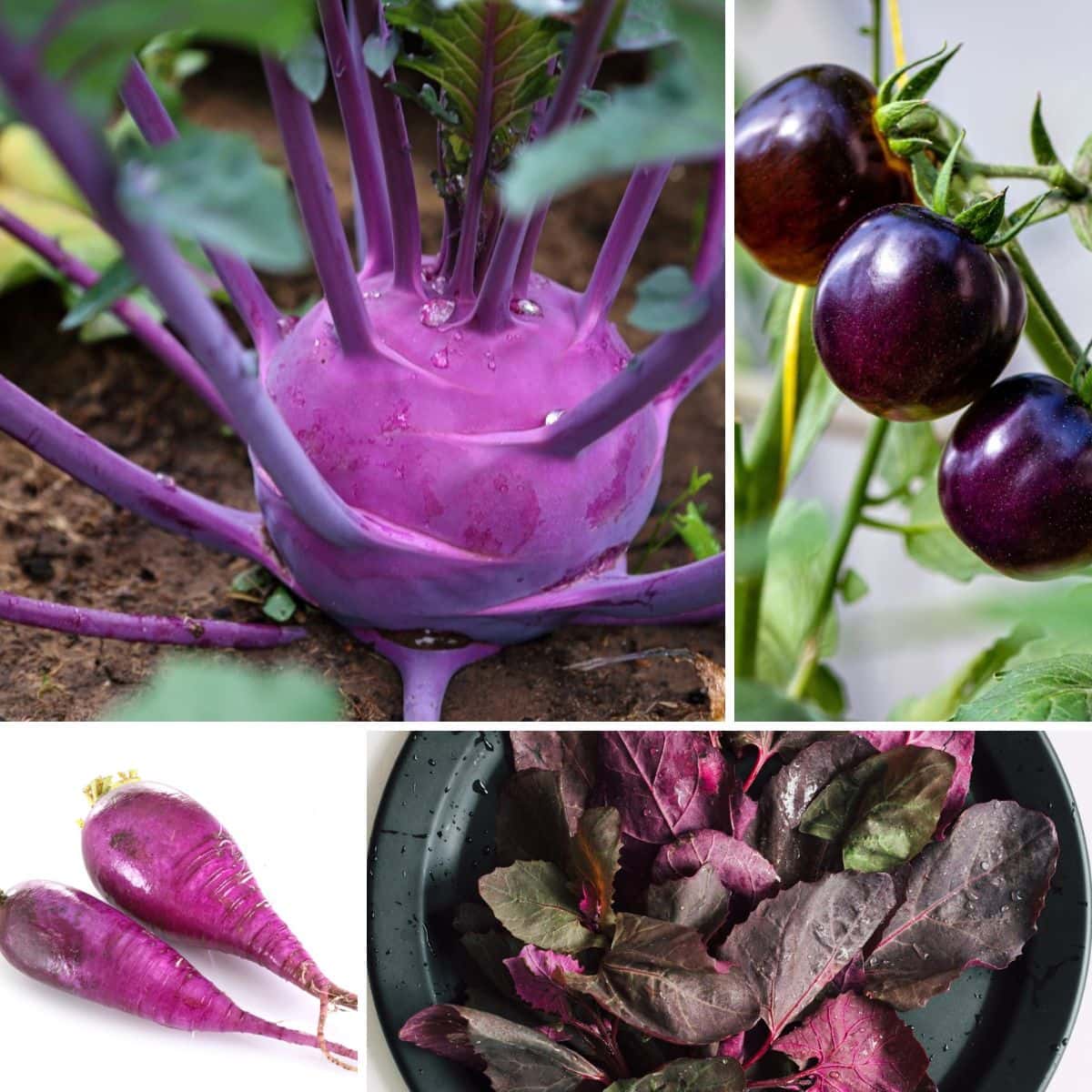
Curious about the purple produce aisle? You’re not alone. While purple potatoes and cabbage may come to mind, there’s so much more to explore. Here are 25 purple vegetables that offer a unique and colorful addition to your dishes.
25 Purple Vegetables
1. Purple Arugula
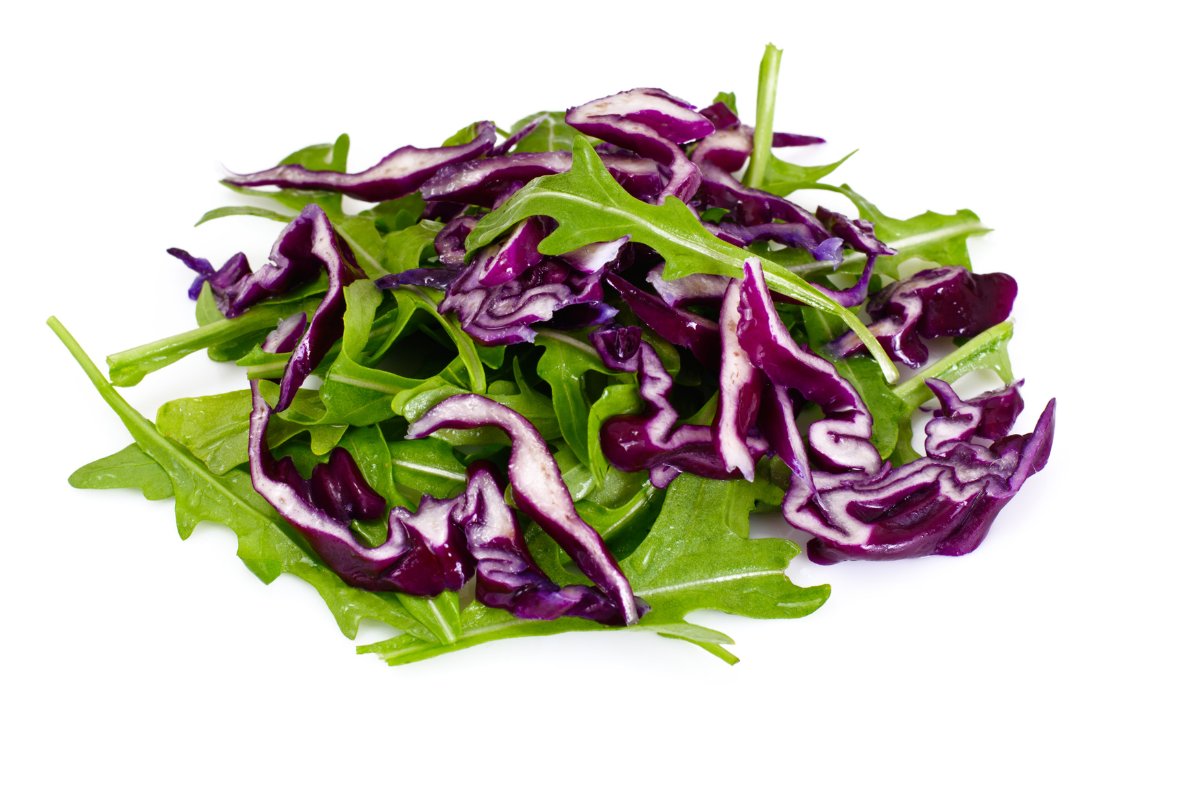
Purple arugula is a leafy green vegetable with a distinctive purple-veined appearance and a peppery flavor similar to its green counterpart. This variety is often used as a bold garnish, in fresh salads, or as an addition to sandwiches and pizzas. The purple coloring is due to anthocyanins, which are antioxidants that may offer health benefits, such as anti-inflammatory properties.
2. Purple Swiss Chard
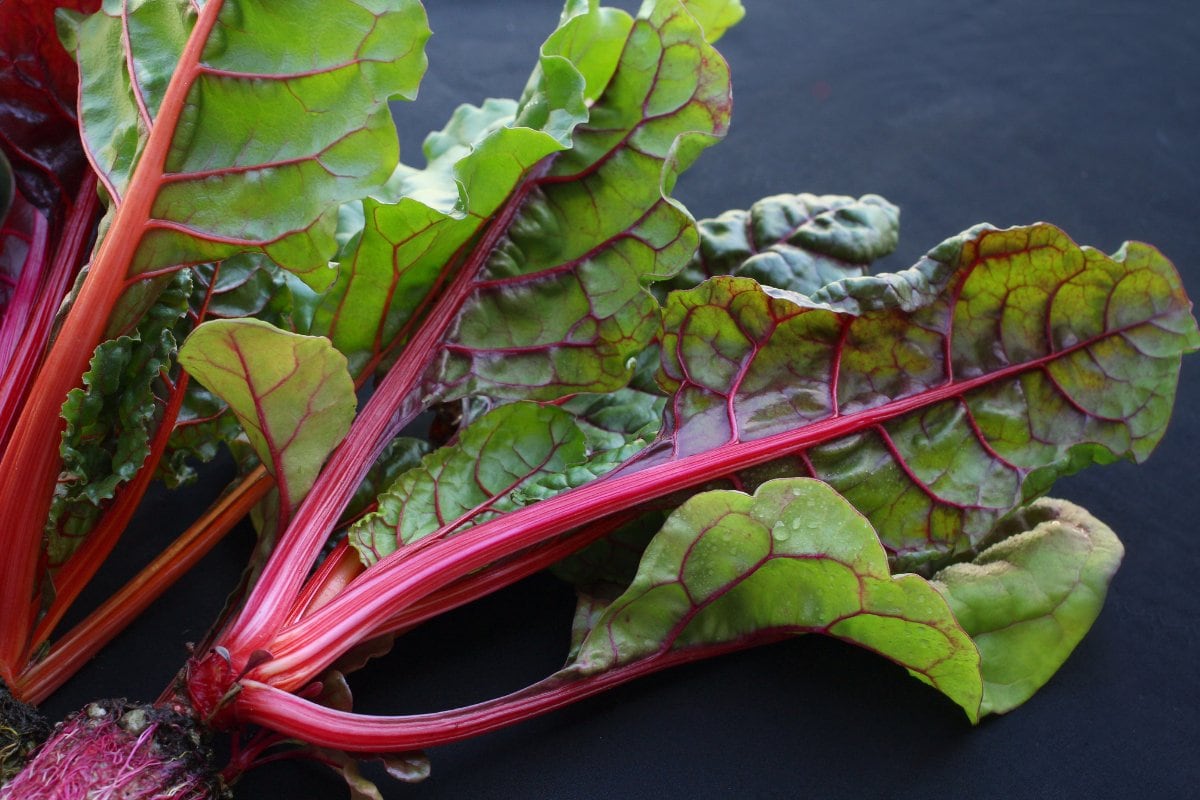
Purple Swiss chard is a leafy green vegetable with bright purple stems and dark green leaves with purple veins. The leaves of the purple Swiss chard are slightly crinkled and can range from lime green to dark purple-green. This colorful chard variety can be eaten raw in salads, sautéed, or added to soups and stews, where it lends a mild, earthy flavor that is less bitter than other leafy greens.
3. Purple Tatsoi

Purple Tatsoi is a variant of the traditional Tatsoi, a leafy Asian green, distinguished by its vibrant purple leaves and mild, mustard-like flavor. The purple pigmentation of the leaves is an indication of anthocyanins. It can be enjoyed raw in salads, where its spoon-shaped leaves add a splash of color. It can also be lightly cooked in stir-fries, soups, and sautés.
4. Purple Mizuna
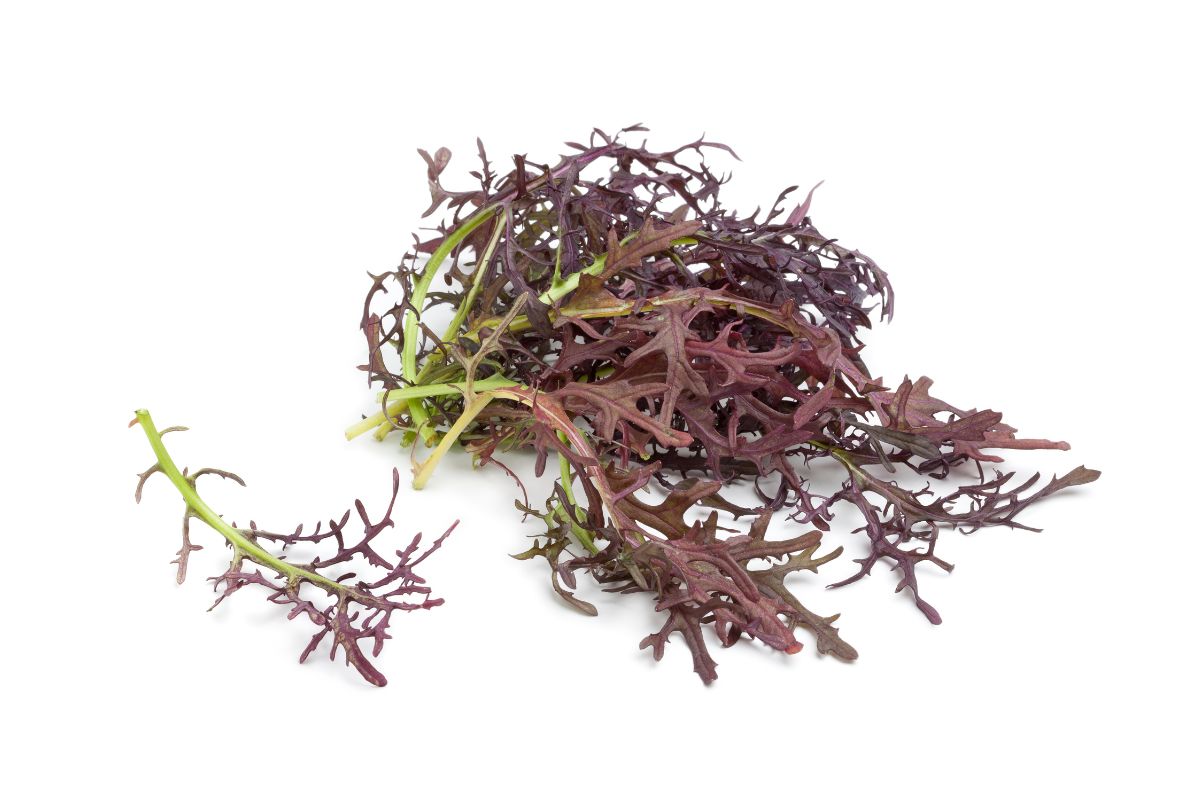
Purple Mizuna is a variety of Japanese mustard green, known for its attractive purple-veined leaves and a mild, peppery flavor. This leafy green is often used in salads to add a splash of color and a slightly spicy bite, but it can also be sautéed or used in soups and stir-fries. Its serrated leaves are not only visually striking but also have a tender texture. The color of purple mizuna becomes most pronounced when harvested in cooler temperatures.
5. Purple Orach
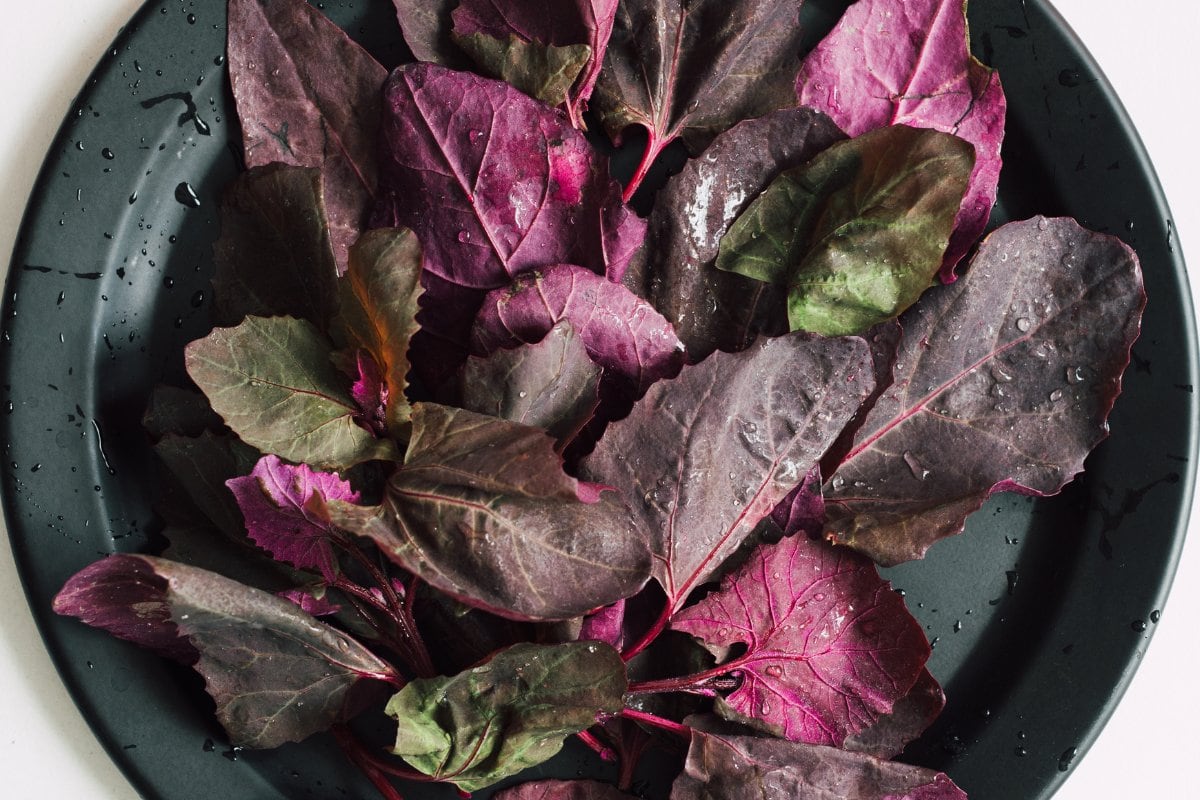
Purple Orach, also known as mountain spinach, is a leafy green vegetable with striking purple leaves. It can be used similarly to spinach or as a decorative salad ingredient. Its leaves retain their purple color when cooked, unlike many other purple vegetables.
6. Purple Kale
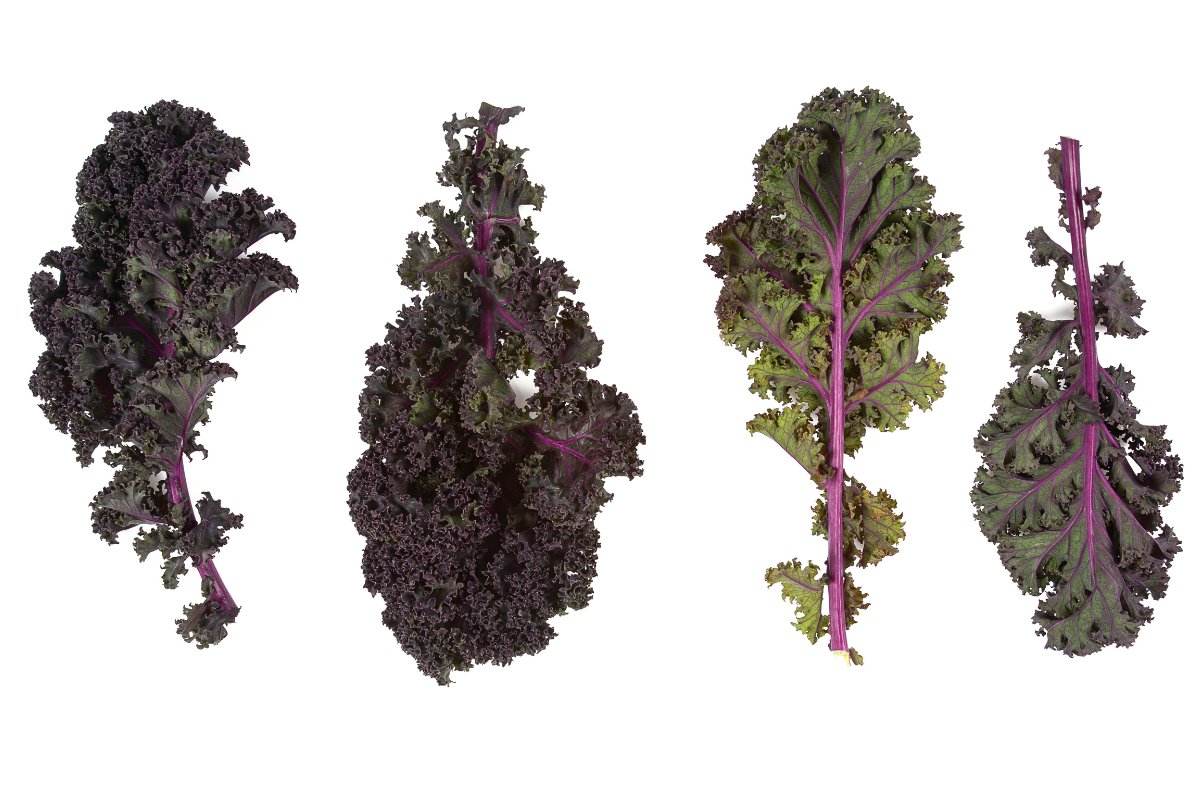
Purple kale is a type of kale characterized by its deep violet leaves and stems. It offers a slightly sweeter taste than green kale. It is often used as an ingredient in smoothies, salads, kale chips, and sautéed dishes. Purple kale’s textured leaves hold up well when cooked, and its striking appearance is a favorite among chefs for adding both visual and nutritional value to meals.
7. Purple Brussels Sprouts

Purple Brussels sprouts are a colorful variety of the traditional green Brussels sprouts. They are known for their distinctive purple hue and slightly sweeter and nuttier flavor. This variety can be prepared in the same ways as their green counterparts, such as roasting, steaming, or sautéing, and they tend to have a more tender texture.
8. Purple Sweet Potato
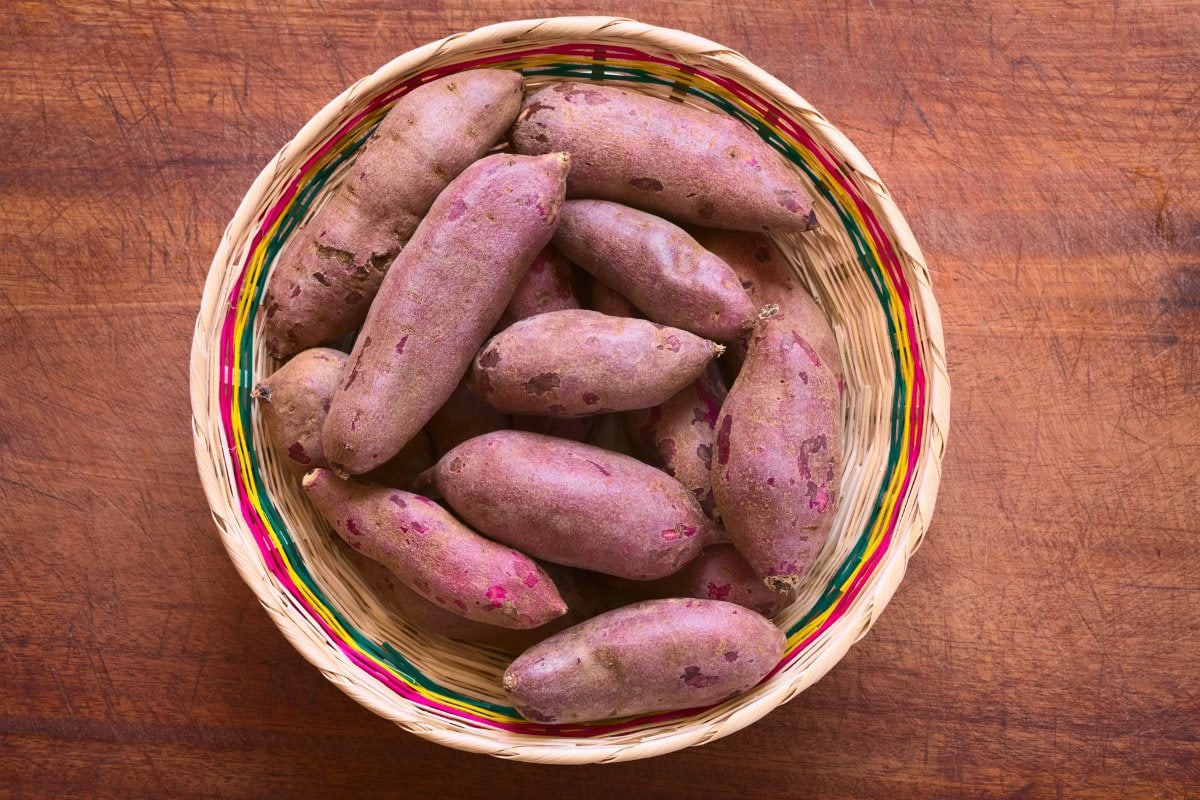
Purple sweet potato, also known as Okinawan sweet potato, is a root vegetable notable for its rich purple flesh, which is high in antioxidants, particularly anthocyanins. This variety of sweet potatoes is not only valued for their unique color and sweet, nutty flavor but also for their health benefits. They are versatile in the kitchen, suitable for baking, roasting, steaming, or mashing, and the vibrant purple hue of these potatoes is retained when cooked.
9. Purple Corn
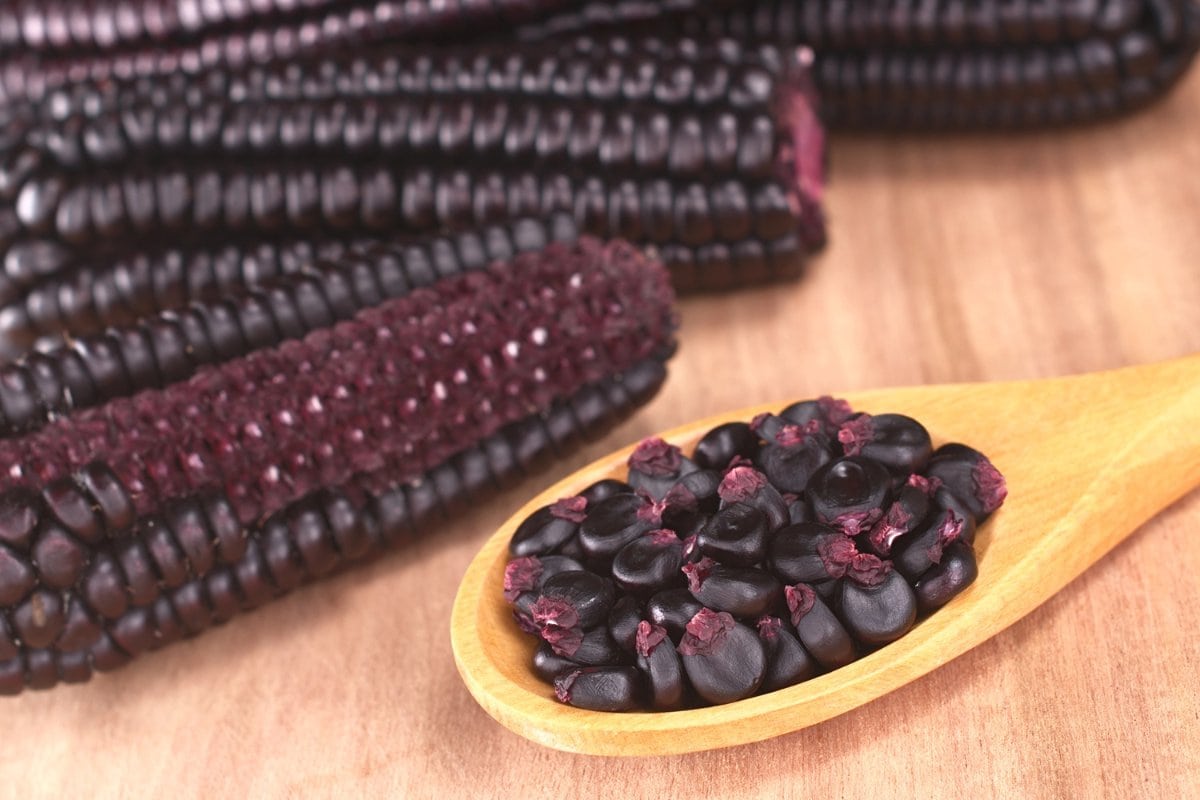
Purple corn is a variety of maize with deep purple kernels, originating from the Andes region of South America. It has been a staple for centuries due to its high nutritional value and health benefits. This vibrant corn is rich in anthocyanins. This variety is used in a wide range of products, from cornmeal and flour to snacks and beverages, including the traditional Peruvian drink called chicha morada.
10. Purple Beet
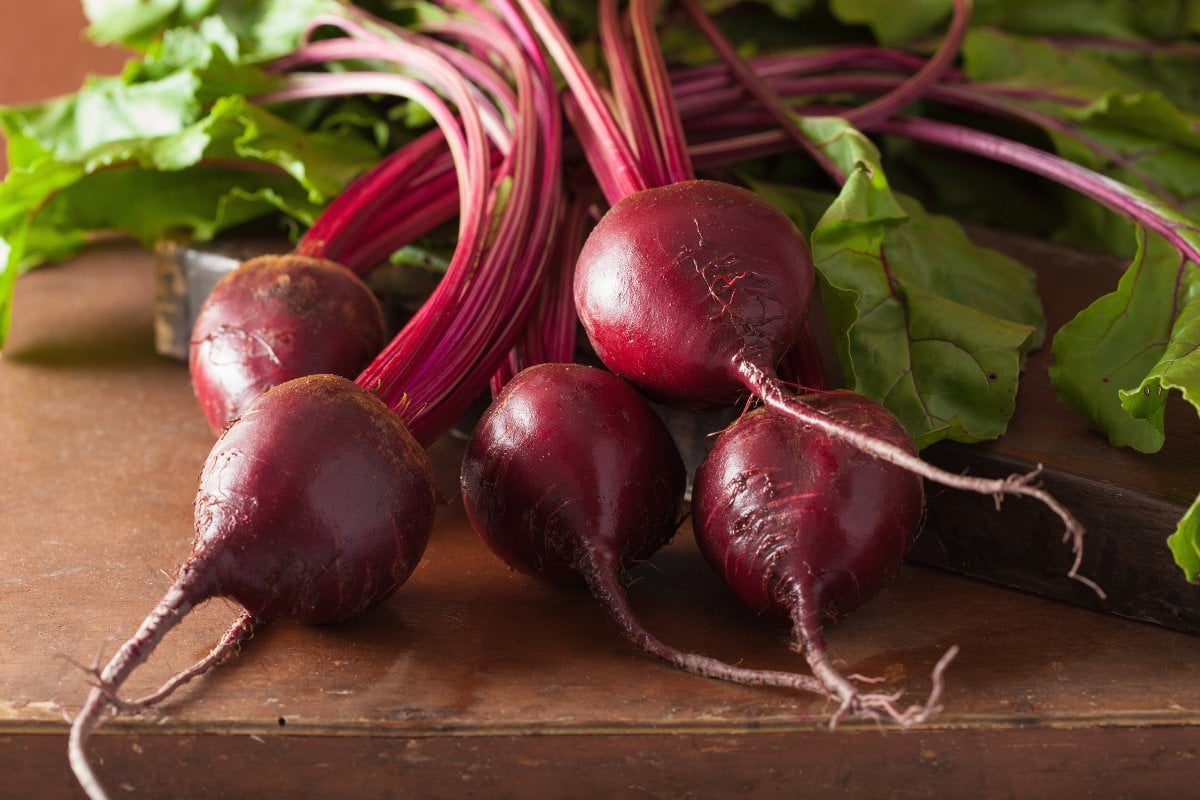
Purple beets, cousin of the more common red beet, have a deep purple exterior and vibrant magenta flesh. It is commonly known as beetroots, which are root vegetables recognized for their deep purple color and earthy sweet taste. They are often consumed raw in salads, juiced, or cooked, which can include roasting, boiling, or steaming.
11. Purple Broccoli
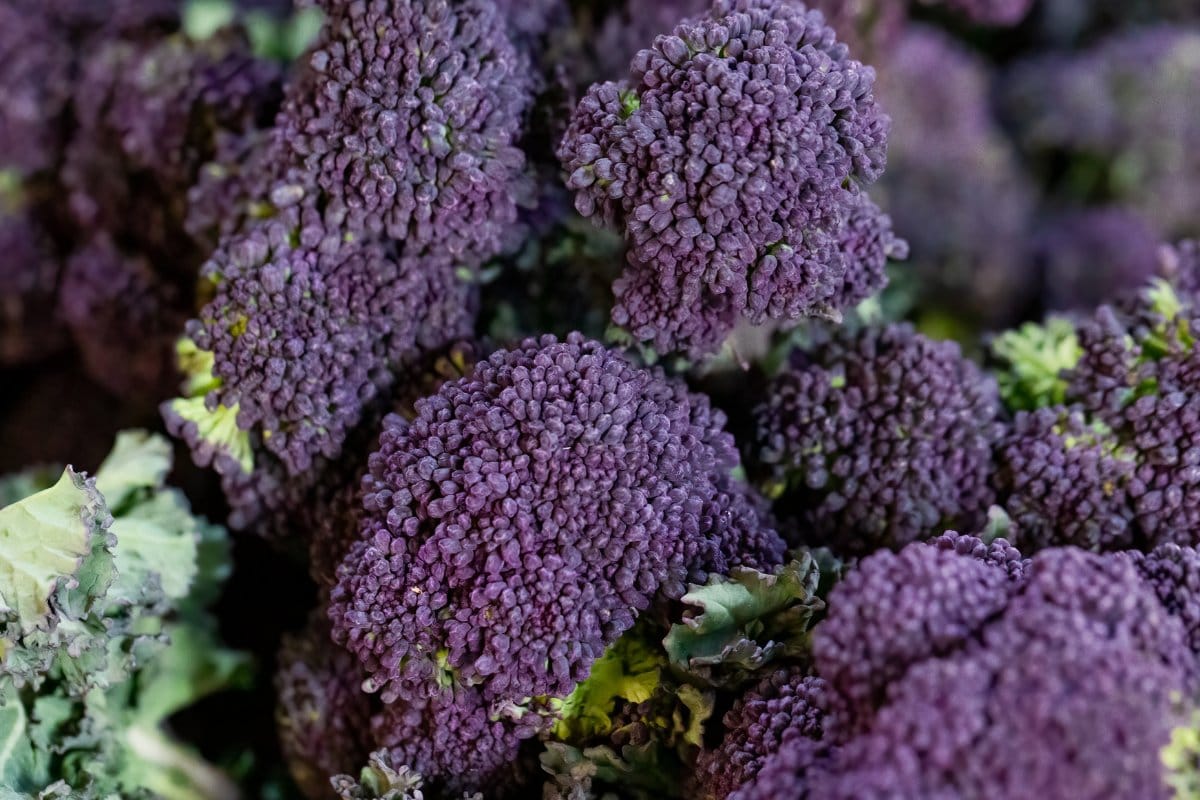
Purple broccoli, also known as purple sprouting broccoli, is a variety of broccoli with purple-hued florets and stems. It has a slightly sweeter and milder taste compared to its green counterpart. It can be enjoyed raw, steamed, roasted, or stir-fried, and is a visually appealing addition to any dish.
Unlike traditional broccoli, purple broccoli is harvested when the florets are still small and tender. The vibrant purple color can also fade to green when cooked, so brief cooking methods are recommended to retain its unique appearance and maximize its nutritional benefits.
12. Purple Radish
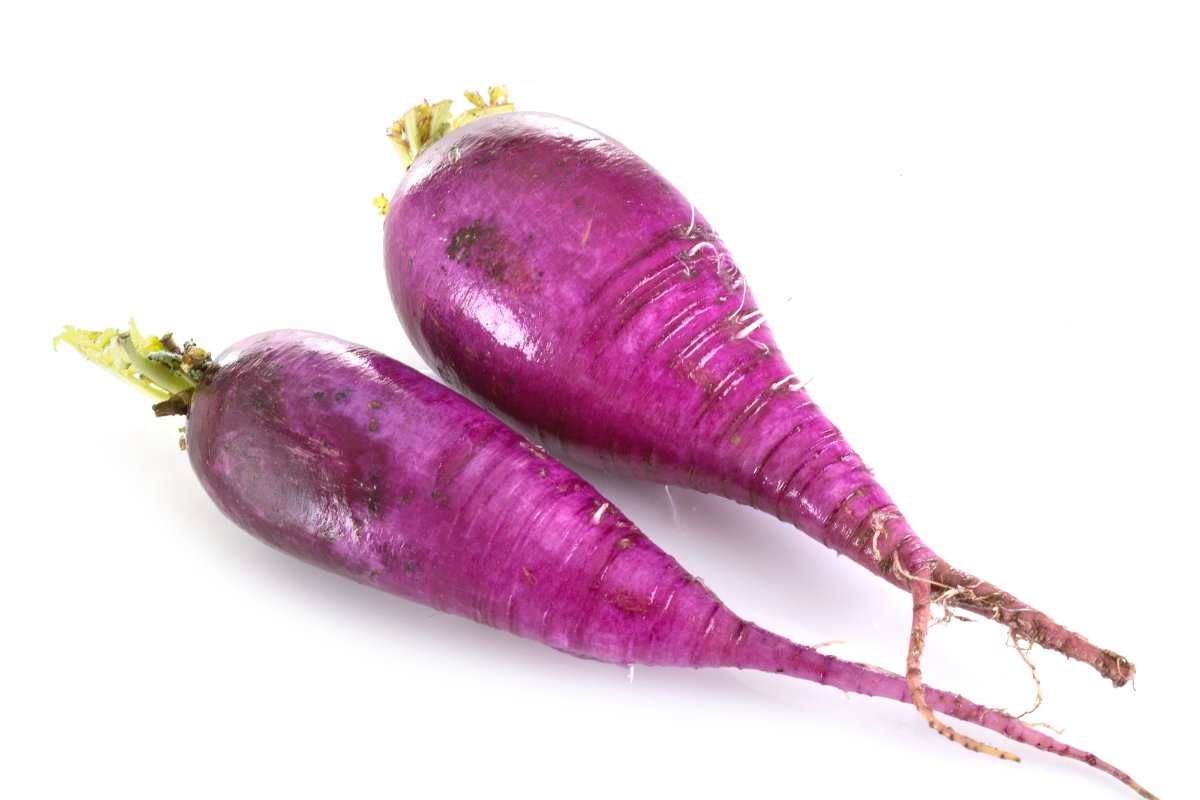
Purple radish is a colorful root vegetable with a vibrant purple skin and crisp, white flesh, that has a peppery and spicy flavor similar to other radish varieties. This variety can be eaten raw, pickled, or cooked, and their crunchy texture makes them a popular ingredient for adding contrast to softer foods.
13. Purple Peppers
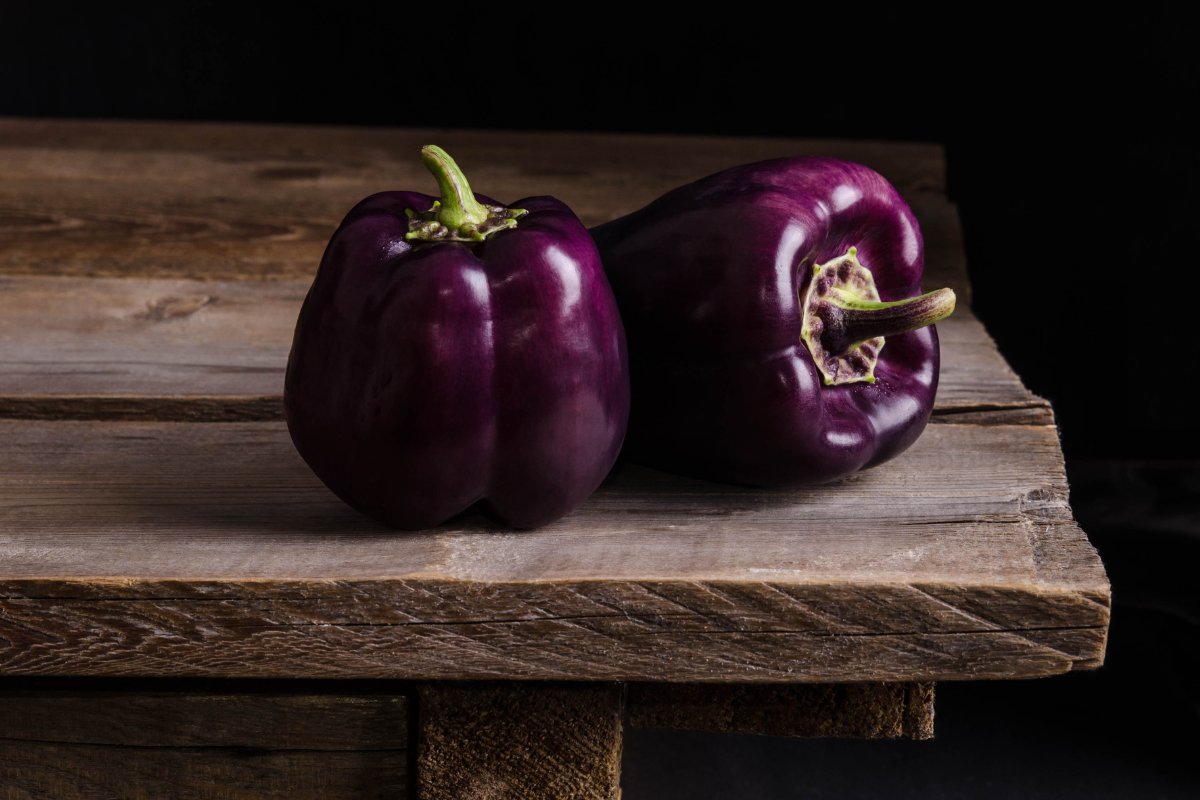
Purple peppers are a type of bell pepper that are known for their striking purple exterior and crisp, sweet flavor. They can be used in a variety of dishes, such as grilling, stuffing, or adding a pop of color to salads and dishes. While they start purple, they often mature to reveal a red or orange interior, offering a visual surprise when sliced open.
14. Purple Beans
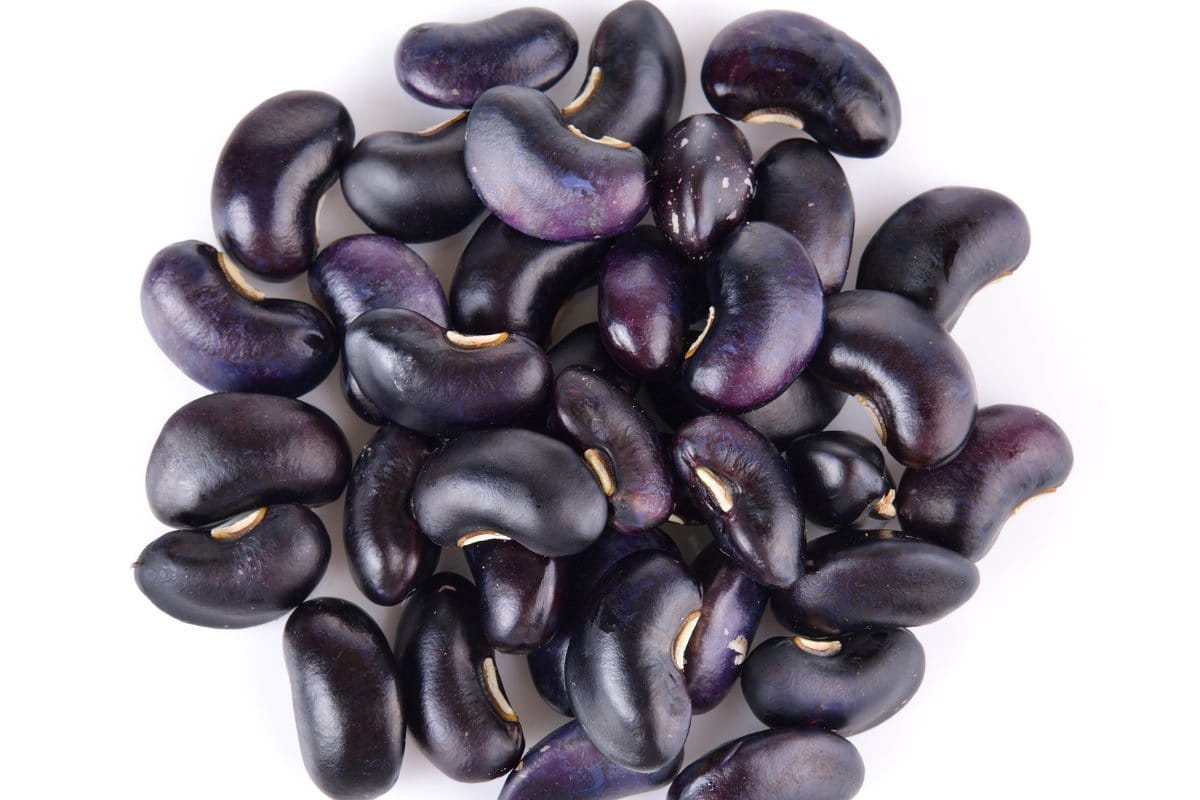
Purple beans are a type of snap bean with a vibrant purple exterior and a green interior that has a crisp texture and slightly different flavor compared to green beans. They can be enjoyed raw or cooked, though their purple color turns green when heated. Purple beans can be steamed, sautéed, or roasted. They are also an excellent choice for home gardens, as they can be easier to spot among the foliage than green varieties.
15. Purple Artichoke
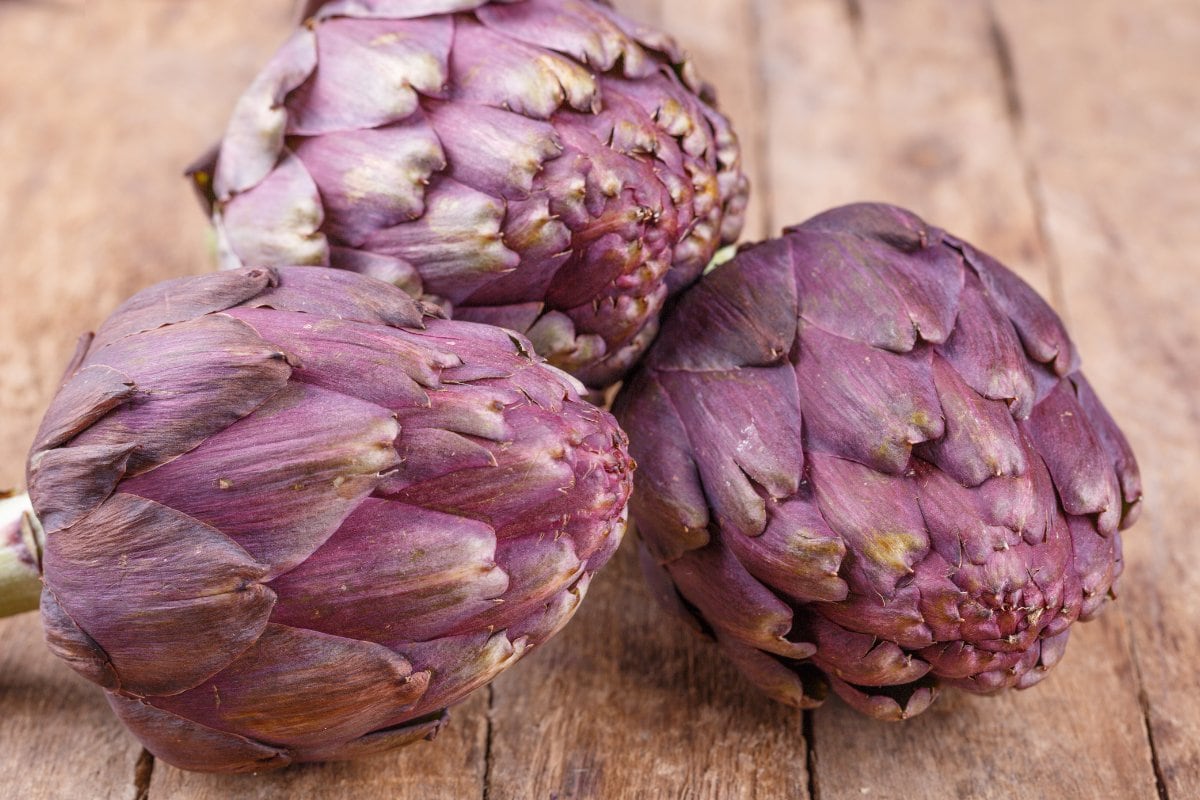
Purple artichokes are a variety of artichokes with a striking purple color, known for their tender texture and slightly nuttier flavor compared to the green variety. These edible flower buds can be prepared in the same ways as green artichokes, such as steaming, boiling, or grilling, and their vibrant hue can make any dish visually appealing. The color variations in purple artichokes, ranging from deep violet to streaks of green, are all natural and add to their unique appearance. Purple artichokes maintain their color after cooking.
16. Purple Okra
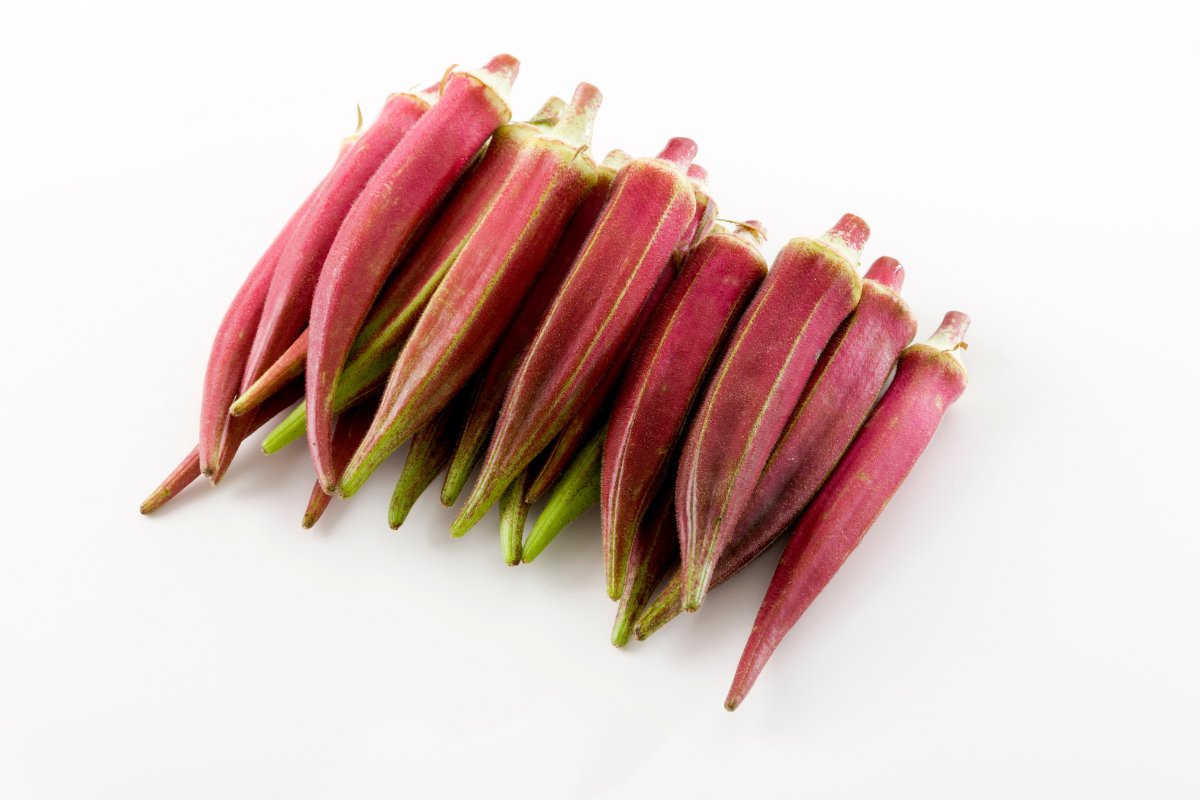
Purple okra is a colorful variety of the traditional green okra that has vibrant purple pods. It has a slightly sweeter and less grassy flavor. This variety can be used in all the same ways as green okra, such as in stews, gumbo, fried, or even raw in salads. The pods are typically smaller and more tender than the green variety, and they turn green when cooked, which can be a surprising transformation.
17. Purple Tomatoes
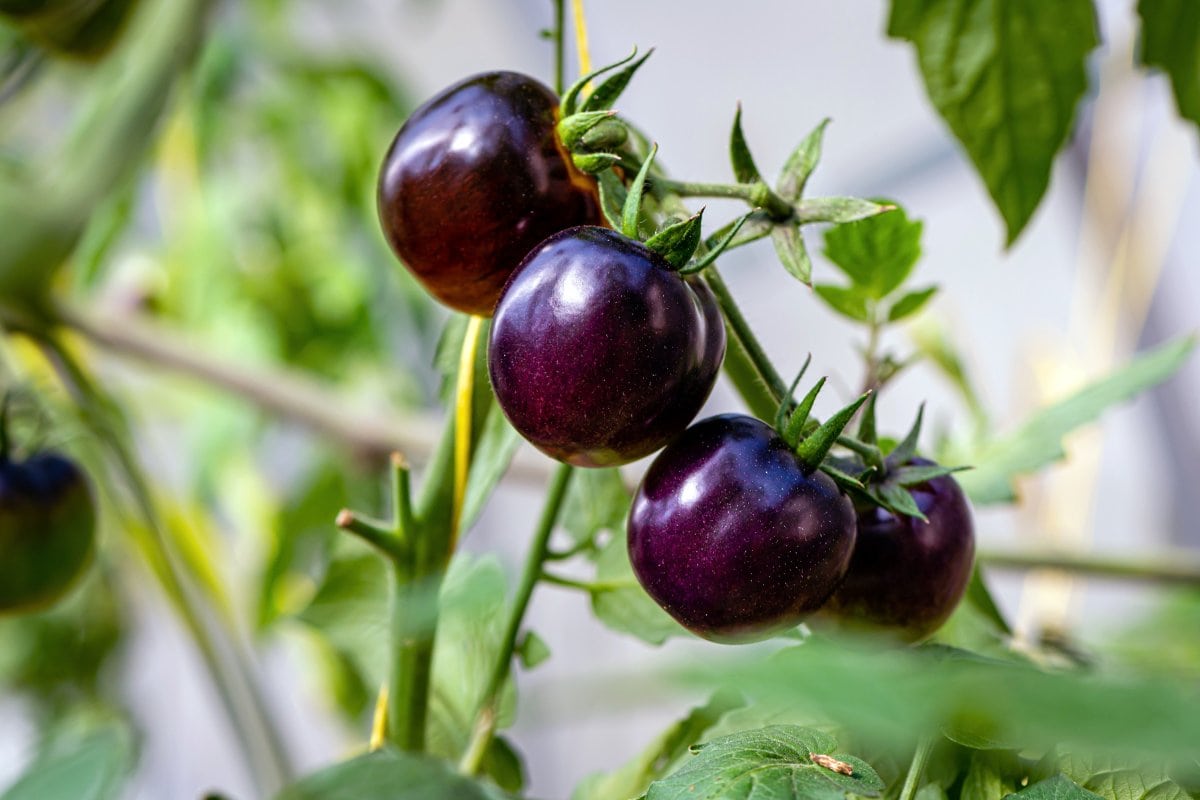
Purple tomatoes have been bred to contain higher levels of anthocyanins. These tomatoes are not just notable for their unusual color. They are also believed to offer more health benefits than regular tomatoes, such as a higher antioxidant content. The development of purple tomatoes is part of a broader effort to create more nutritious produce through genetic modification and selective breeding.
18. Purple Spinach
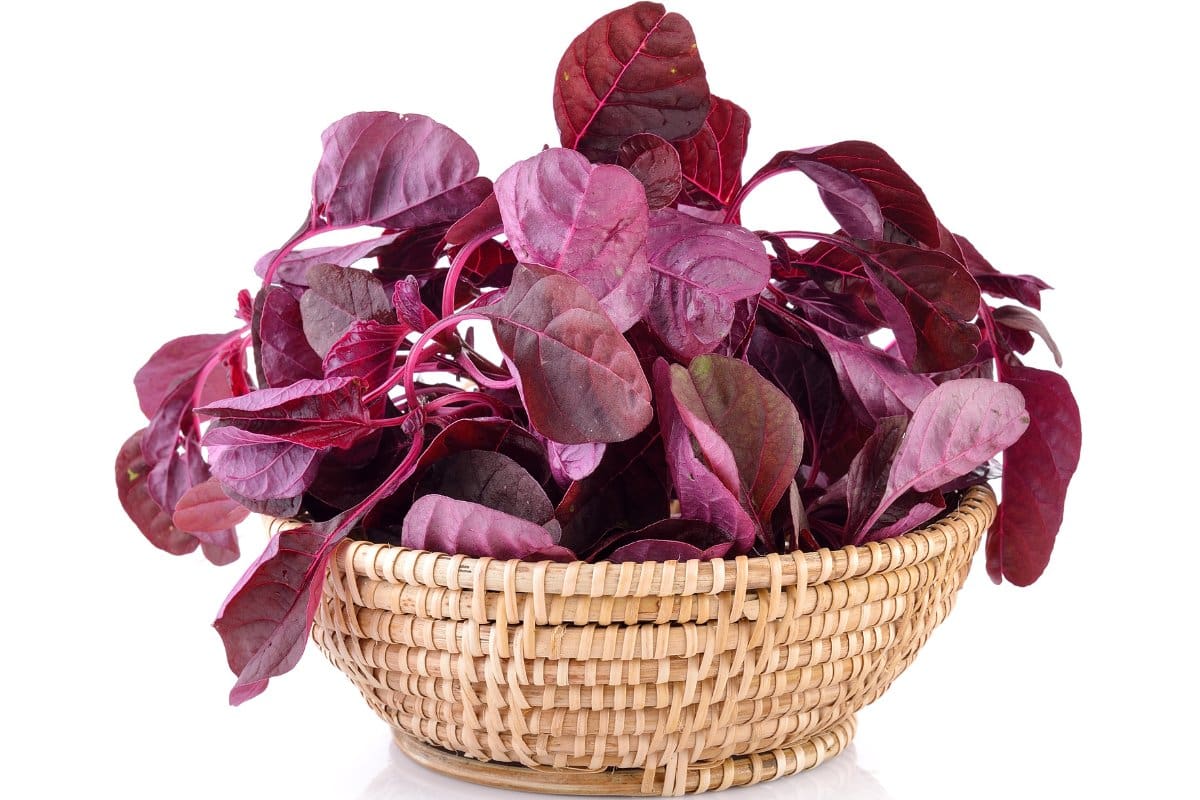
Purple spinach is a variety of spinach that has vibrant purple-veined leaves. This leafy veggie is not only visually striking but also nutritionally dense and can be enjoyed raw in salads, blended into smoothies, or cooked in a variety of dishes.
19. Purple Lettuce
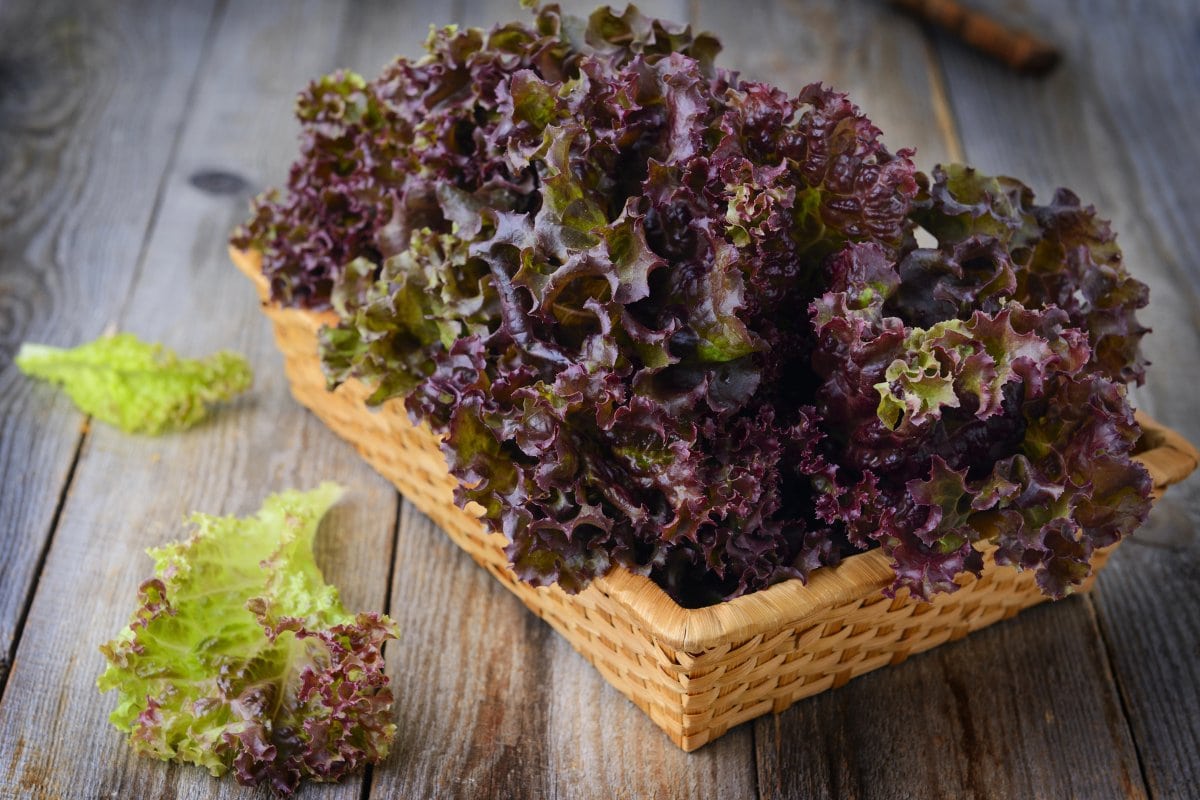
Purple lettuce is a variant of lettuce with deep purple-hued leaves and a similar taste profile to green lettuce varieties. They can be used interchangeably with other lettuce types in salads, and sandwiches, and as a garnish to any dish.
20. Purple Onion
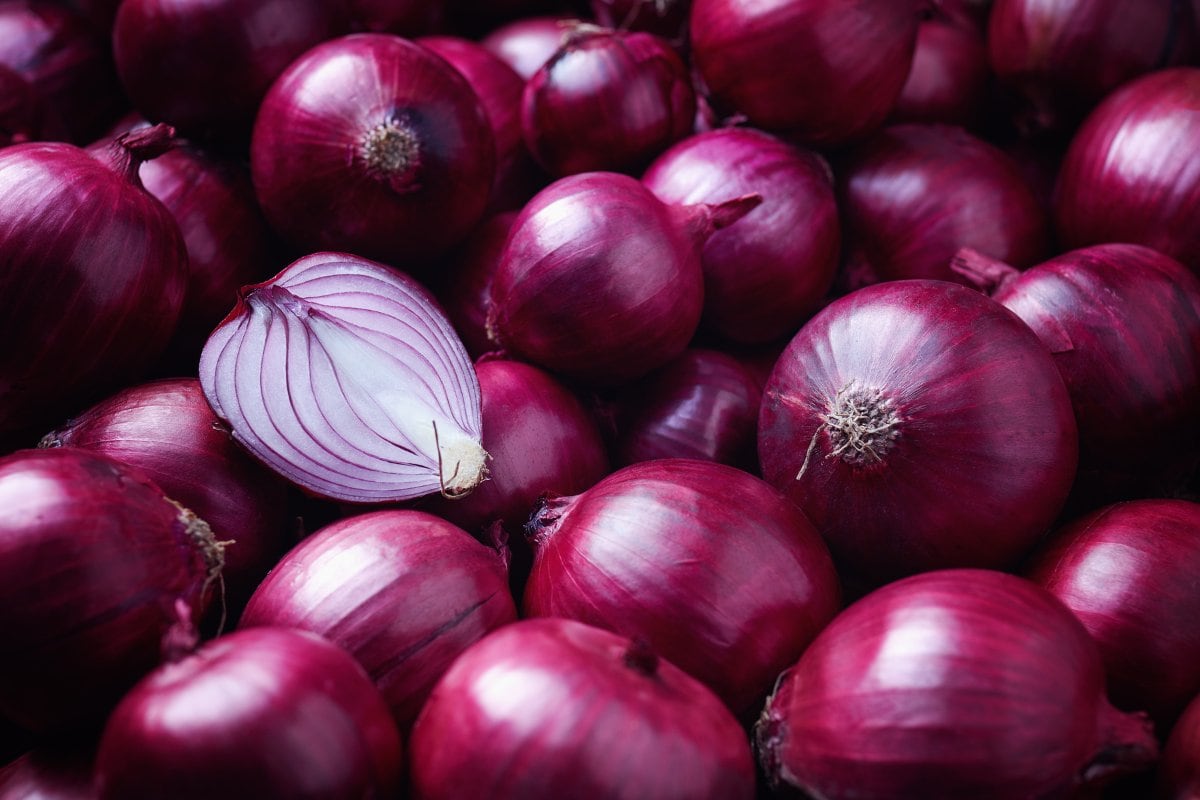
Purple onion, also known as red onion, has deep purple skin and reddish-purple flesh. It has a slightly milder flavor compared to yellow or white onions and is commonly used raw in salads, sandwiches, and salsas, as well as cooked in various dishes.
21. Purple Garlic
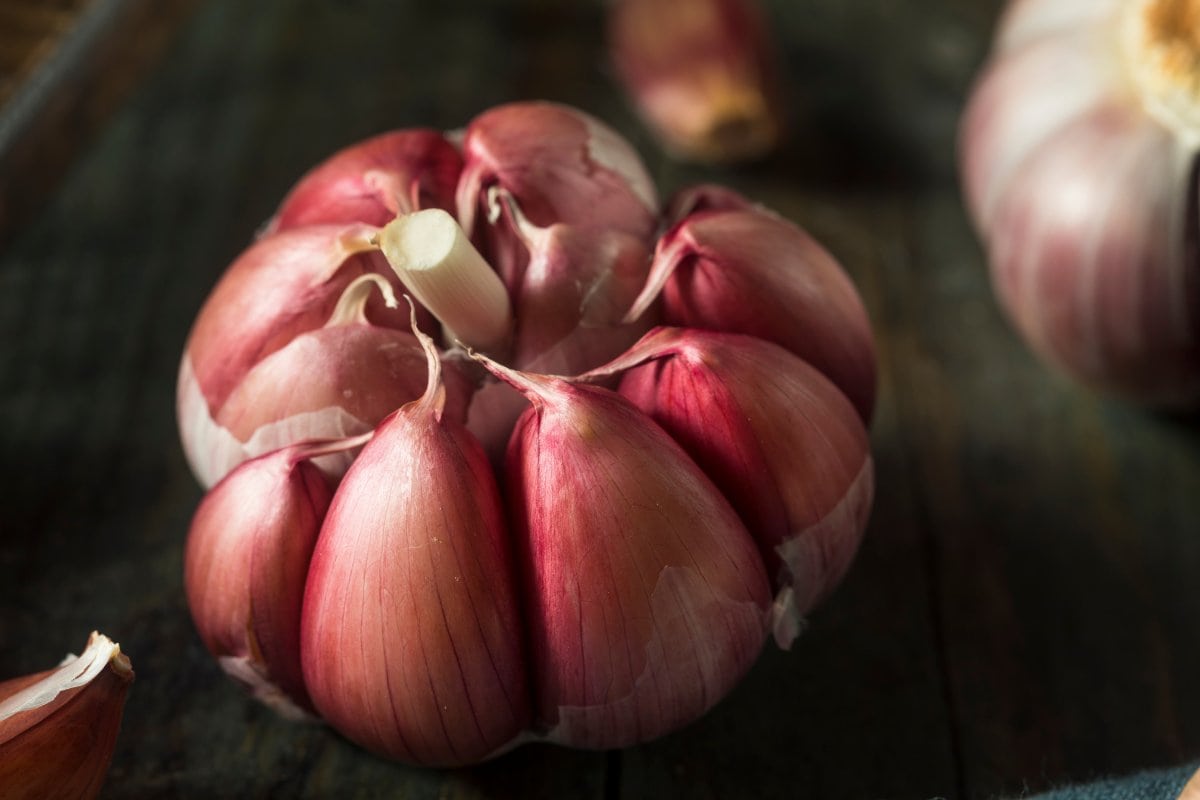
Purple garlic, also known as creole garlic or purple stripe garlic, features purple-striped outer skins and cloves with a rich purple hue. It has a strong flavor but is slightly milder and sweeter than white garlic. It can be used in the same way as other garlic types in cooking, such as garlic confit, and offers a vibrant hue and a potent flavor to a wide array of dishes.
22. Purple Kohlrabi
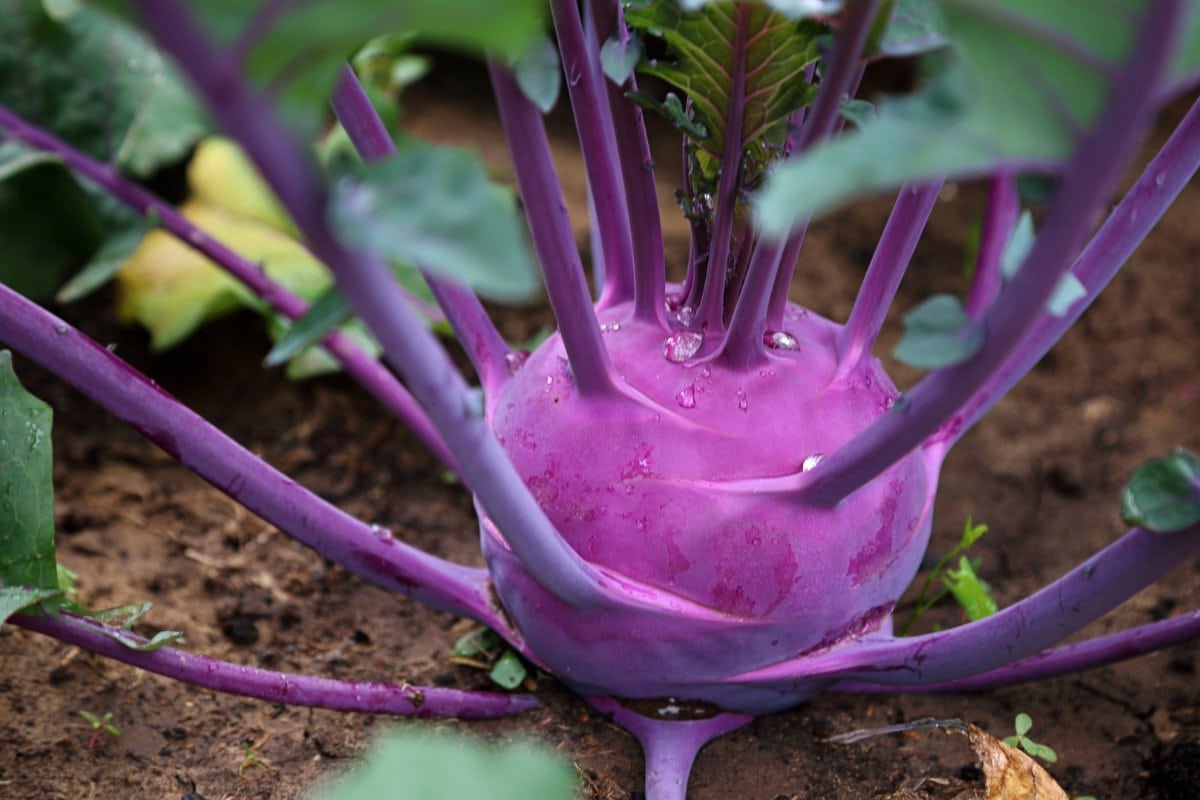
Purple kohlrabi is a unique vegetable with a bulbous purple stem and leaves resembling collard greens. It is known for its mild, sweet flavor with a hint of apple, and is enjoyed both raw or cooked. The color of purple kohlrabi is contained in the skin only, which can be peeled away to reveal the familiar light-colored flesh inside, similar to its green variety.
23. Purple Fennel
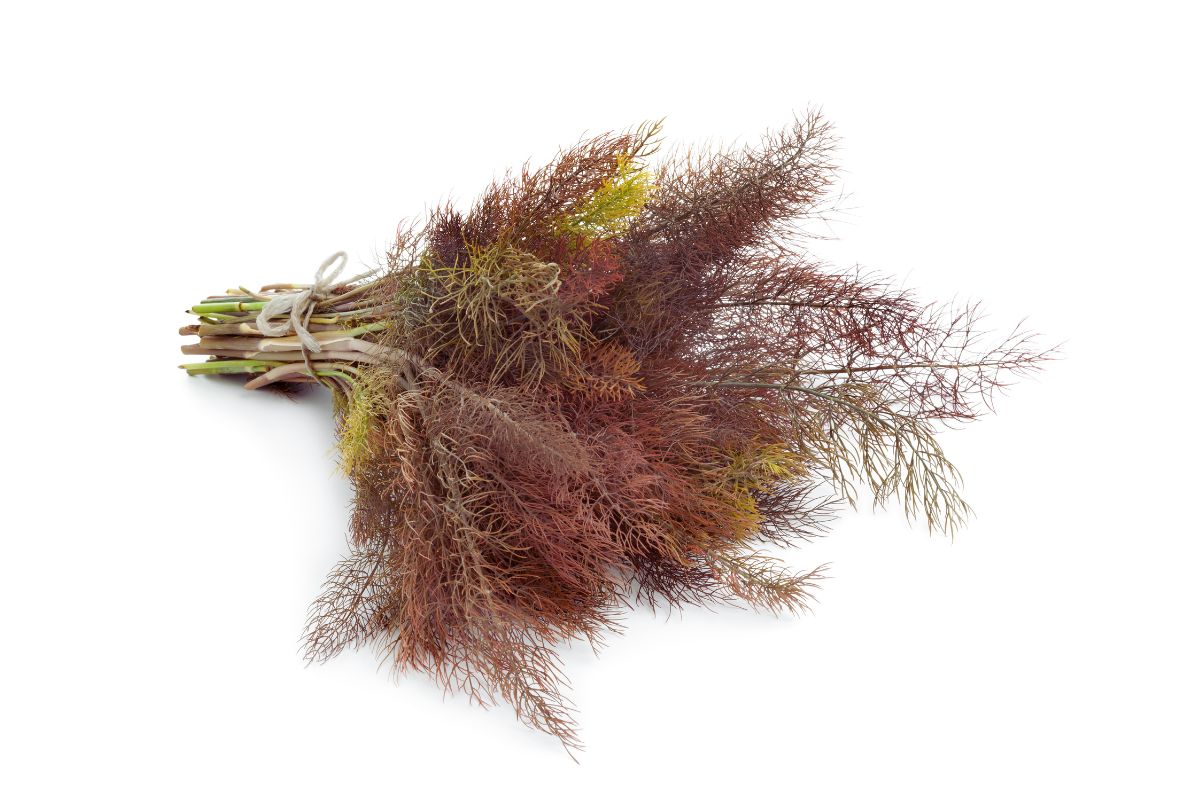
Purple fennel, also known as bronze fennel, is a variety of the common fennel plant. It’s characterized by its striking, feathery purple foliage and a sweet anise-like flavor. It can grow up to 6 feet tall, and its leaves are delicious when chopped into salads or used as a garnish. Purple fennel is also valued for attracting beneficial insects, such as butterflies and bees, to the garden, because of its small yellow flowers, which bloom in umbels.
24. Purple Turnip
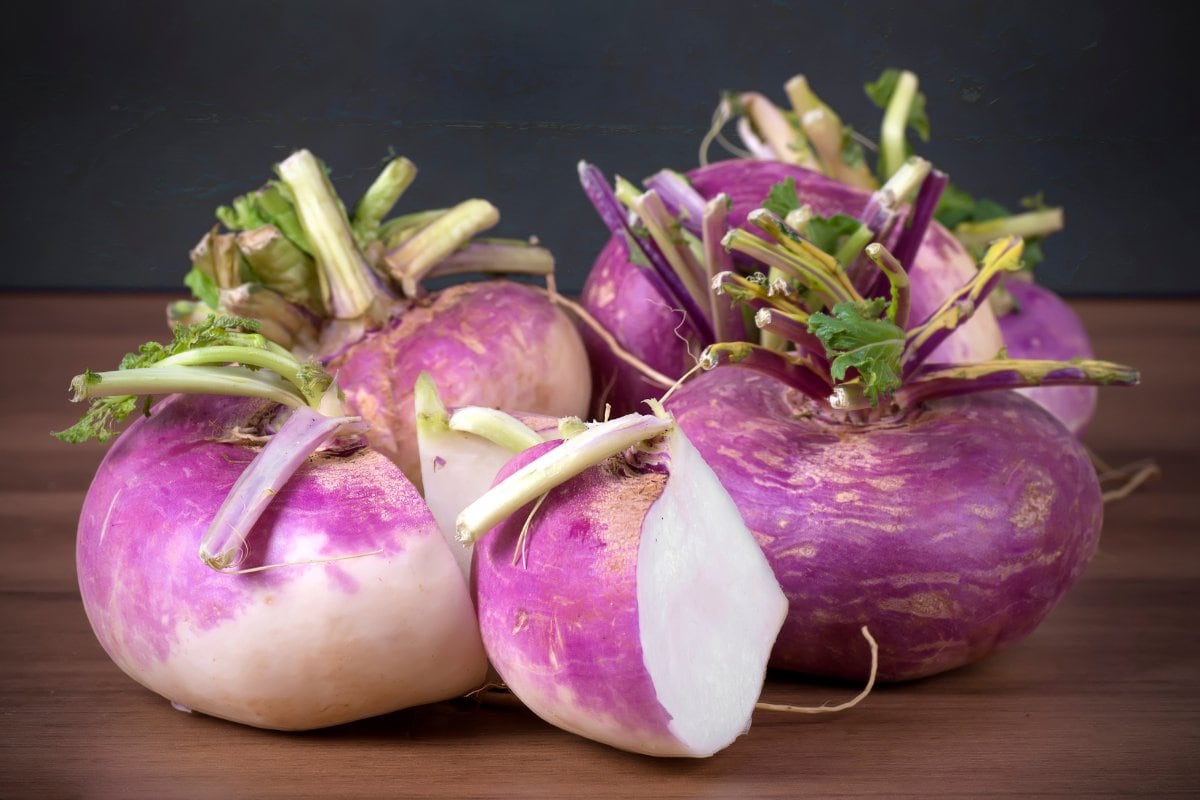
Purple turnip is a root vegetable with a distinctive purple-hued upper part and a white lower part. It has a slightly peppery flavor when raw and a sweeter taste when cooked. They can be eaten raw, like in salads, or cooked in various ways, such as roasting, boiling, or steaming, which can mellow their spicy bite and bring out their natural sweetness. They are often accompanied by their greens, which are also edible and highly nutritious.
25. Eggplant

Eggplant, also known as aubergine, is a glossy, deep purple vegetable. It has an elongated shape and spongy texture and is a member of the nightshade family. Eggplants are not only versatile in culinary uses but also rich in fiber, vitamins B1 and B6, and potassium, and contain important phytonutrients with antioxidant properties. They can absorb flavors well, making them ideal for a variety of dishes like eggplant parmesan, eggplant curry, ratatouille, and baba ganoush.

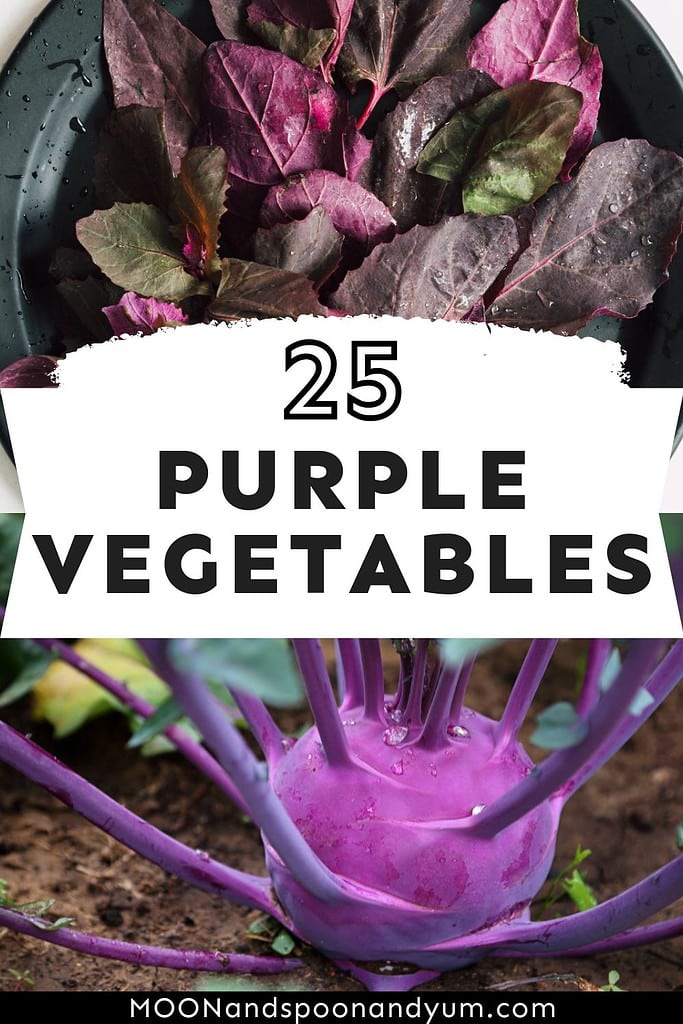
This was a fun read on purple veggies, many I have never seen, like purple broccoli and purple radish. I just bought purple sweet potatoes which was new at the store.
Purple Brussels sprouts are such a unique find! I bet they would make a stunning addition to a holiday dinner spread. Adding them to my shopping list ASAP!
I always on the lookout for tips on more nutrition in my diet, this is VERY helpful. Thanks for the insights!
Purple Brussels sprouts? That’s something I need to taste! Roasting them with a bit of olive oil and garlic sounds like the perfect side dish for dinner tonight.
I love eggplant parmesan, so I’m excited to see eggplant on this list. Purple turnip caught my attention too—I’m curious how its flavor compares to regular turnips. Time to give purple turnip a try!